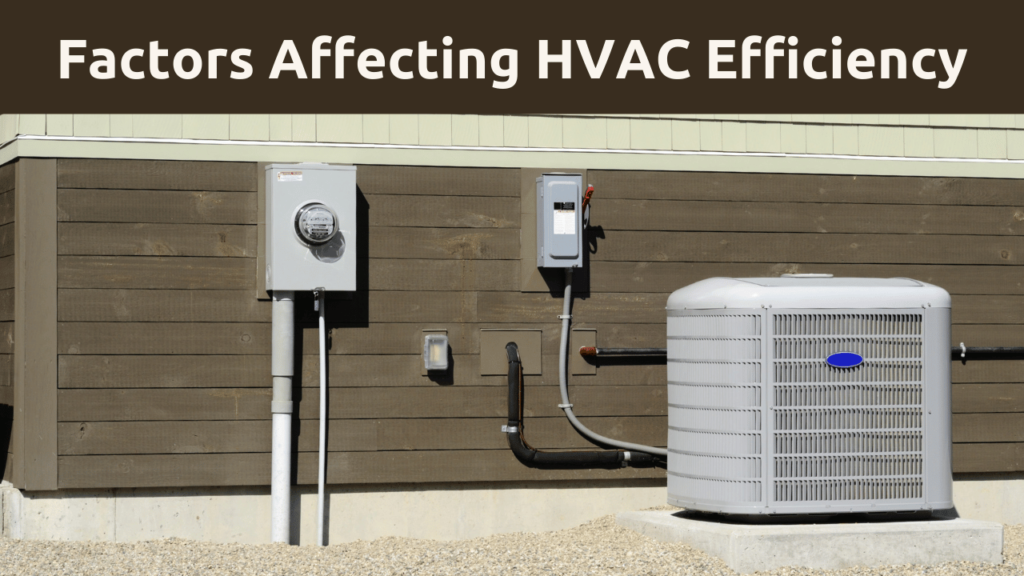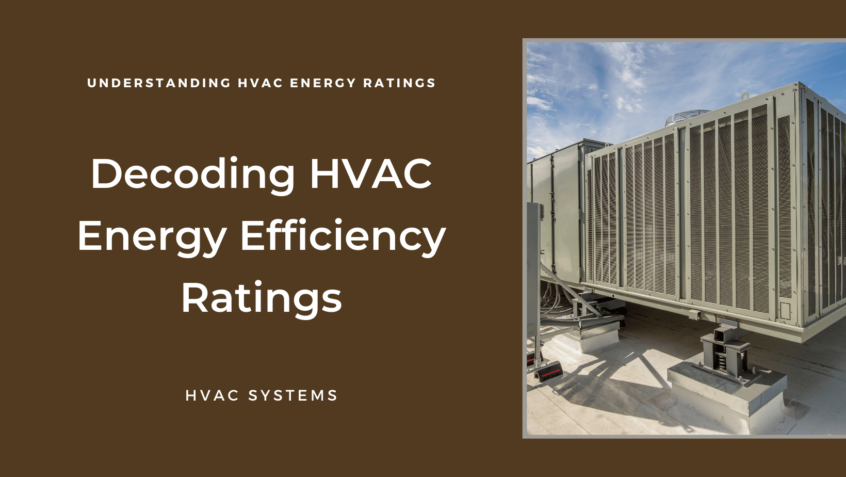In homes and buildings, heating, ventilation, and air conditioning (HVAC) systems comprise significant energy consumption. Heating and cooling equipment are labeled based on their energy consumption, so buyers can select appliances that shall save them energy in the future. However, what do all those efficiency figures tell about HVACs? This article examines the various kinds of ratings that are usually given about HVAC systems and what such ratings imply.
SEER Rating
Air conditioning efficiency is rated by the Seasonal Energy Efficiency Ratio (SEER), which indicates how many BTUs of cooling are delivered per watt of electricity used. An attribute of the HVAC system is the SEER rating; the higher the rating, the more energy-efficient the system.

– SEER scores vary between 13-21 or higher. The lowest standard efficient energy rate or SEER permitted today is 14. Thus, the minimum SEER a system should have is 14, and 21 is considered an efficient rating as a maximum.
– Every increase in SEER by one point corresponds with efficiency gains ranging between 5 to 8 percent. Consequently, a SEER 21 system is likely to be half more efficient than a SEER 14 system.
– The efficiency difference between a current AC with a SEER of 10 and a new one with SEER of 16 can lead to up to a 40 % decrease in cost of cooling.
EER Rating
The Seasonal Energy Efficiency Ratio (SEER) refers to how effectively an HVAC system cools a residence under the highest environmental conditions in the summer.
– An EER of 10. 5 to 12 is ideal especially in equipment that have not undergone many operating cycles. EER is expressed in terms of its ratios; the higher the rating, the better the performance.
– EER is dissimilar to SEER since it only refers to a unit’s highest possible cooling capacity at the Summer conditions and not the average overall savings per year as in SEER.
HSPF Rating
This is a measure of the heating efficiency of heat pumps known as the Heating Seasonal Performance Factor (HSPF). It shows the number of BTUs of heat produced for every kilowatt-hour of electricity consumed in the heat pump system.
– The HSPF ratings are from seven for the old systems to ten for new systems. The significance of the ratios is that their values increase with efficiency and decrease heating costs.
– A slight improvement from a unit with an HSPF of 6 to a higher HSPF, say 8, can reduce heating expenses by 20-30%.
AFUE Rating
Annual Fuel Utilization Efficiency or AFUE indicates the efficiency of furnaces and boilers. This calculates the amount of fuel consumed and transformed into heat energy supplied to a home against the fuel that enters into the furnace.
– AFUE ratings are pretty high and range from 80% to 98% efficiency or even higher. As per the regulation, new models of furnaces should not have an AFUE of less than 80%.
– Replacing an existing furnace with a new one that is 90% as efficient as the previous one is capable of cutting heating expenses by as much as 30%.
What Impacts HVAC Efficiency?
There are several factors that impact the efficiency of HVAC equipment beyond just the ratings:
Proper Sizing and Installation
When sizing the system it should be suitable for your home and when installing, ensure it was done by a professional so as to achieve the rated efficiency. Equipment that is smaller or larger than needed will not perform as well as equipment that has been appropriately sized for the necessary tasks.

Maintenance
Additional factors include; It is essential to wash air filters at least once a month and have the equipment serviced by a professional at least once a year. Refrigerant charge, air flow rate, mechanical parts, and controls can deteriorate with time.
Your Location and Home
Regional weather conditions and costs of utilities, the size, architectural design of the house as well as its insulation levels will also determine the actual energy you are likely to save with high efficiency HVAC equipment. Rating conditions are the tests that offer the same context and your actual conditions will affect efficiency.
Conclusion
There are primary and secondary energy efficiency ratings used in HVAC equipment. To select the equipment that will provide maximum energy savings, it is critical to understand these ratings. It is possible to compare SEER, EER, HSPF and AFUE ratings to find the optimal system suitable for your area and house.
When selecting efficient high efficiency HVAC equipment, the proper sizing, installation, maintenance, and home efficiency upgrades, the equipment performs at its best. It yields the optimum results for low energy consumption in the long run. A HVAC professional should be consulted to decide on the best system for your building and pocket.

